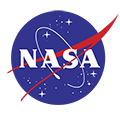New NOAA Funding Opportunity: Regional Vulnerability Assessments for Ocean Acidification (RVA-OA17)
Please note: NOAA OA is a member of the CCIWG and the U.S. Carbon Cycle Science Program.
Excerpts from the announcement
The purpose of this document is to advise the public that NOAA/OAR/Ocean Acidification Program (OAP) is soliciting proposals for collaborative projects of up to 2 years in duration that synthesize ocean acidification information at a regional scale (e.g. Large Marine Ecosystem, large estuary or collection of small estuaries, and state or collection of states in US waters) to determine where societal vulnerabilities to acidification exist or are emerging, in order to provide actionable information for marine resource decision makers. This funding opportunity will not support the collection of new chemical or ecological observations or species response data. Social science data collection is permitted. Funding is contingent upon the availability of Fiscal Year 2017 Federal appropriations. It is anticipated that projects funded under this announcement will have a September 1, 2017 start date. Approximately 3-6 projects for 2 years in duration are expected to be funded at the level of approximately $100,000 - $350,000 per year per proposal. It is anticipated that up to $2,000,000 may be available in FY 2017 for the first year of projects. For details, please see the announcement here.
About NOAA’s Ocean Acidification Program (OAP): NOAA OAP was established by the Federal OceanAc idification Research and Monitoring (FOARAM) Act. OAP coordinates research, monitoring, and other activities to improve our understanding of how the chemistry of the ocean is changing, how variable that change is by region, and what impacts these changes are having on marine organisms, people, and the local, regional, and national economies that depend on the ocean. NOAA’s mission is to understand changes in the world’s oceans, share that knowledge, and conserve coastal and marine ecosystems. The OAP plays an integral role in NOAA’s mission by monitoring changes in ocean chemistry, measuring the biological response of ecologically and economically important species, assessing the socioeconomic impacts of the ocean chemistry changes and organismal responses, promoting ocean acidification educational opportunities; engaging in national public outreach activities related to ocean acidification and its impacts; and coordinating ocean acidification activities with other agencies and international ocean science bodies.




